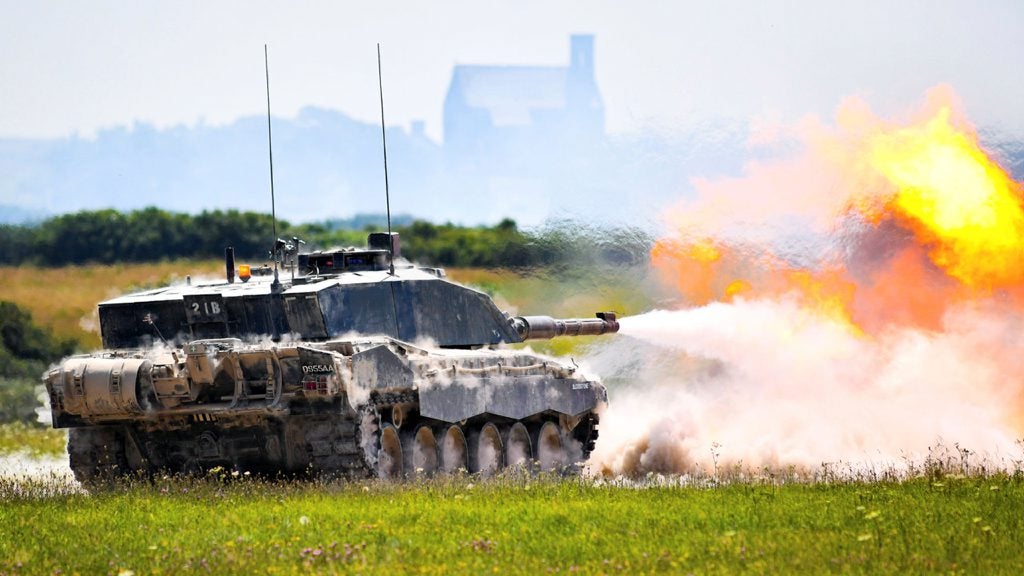
Revitalizing the UK Main Battle Tank Fleet: Not a Lost Cause
Commenting on the putative plans, MP and Chair of the Defence Committee Tobias Ellwood told Army Technology the UK’s fleet of Challenger 2 MBTs and Warrior AFVs were a ‘critical, yet neglected’ part of the British Army and advocated that service chiefs make ‘strategic decisions not ham-fisted cuts’ when it comes to deciding on the future of the fleet.
The Times quoted a government source as saying: “We know that a number of bold decisions need to be taken in order to properly protect British security and rebalance defence interests to meet the new threats we face.”

Discover B2B Marketing That Performs
Combine business intelligence and editorial excellence to reach engaged professionals across 36 leading media platforms.
Reynolds told Army Technology: “Throughout the War on Terror, the British Army has effectively prioritised integration with the US over integration with the rest of NATO, as well as maintaining its ability to deploy medium-scale forces in an expeditionary capacity on an independent basis, outside of an alliance framework and without the support of allies.
“In the past, the British Army was large enough to meet all of these commitments in a credible fashion (more or less). However, the progressive downsizing of the force has left the British Army and British Armed Forces, in general, having to make choices about which capabilities it can maintain at the expense of others.”
Currently, the UK operates a fleet of 227 Challenger 2 MBTs and 388 Warrior AFVs, both of which have faced problems with delays to life extension programmes that will ensure the continued service of the vehicles into the next few decades. Under the alleged new plans, both would be mothballed.
Specialisation or generalisation
A move to cut the tanks reflects a wider debate around what role the UK Armed Forces should play, whether that is to be able to undertake expeditionary activities of its own volition or to focus efforts on contributing to NATO, instead of focusing solely on sovereign capability.

US Tariffs are shifting - will you react or anticipate?
Don’t let policy changes catch you off guard. Stay proactive with real-time data and expert analysis.
By GlobalDataReynolds explained that the UK was not the only NATO member experiencing a ‘downsizing issue’, adding that the alliance ‘has long been comprised of multiples national armed forces that are complete armed forces in their own right.’
“However, as these forces shrink, contributing to NATO effectively may increasingly mean that members have to specialise and provide particular capabilities, while divesting themselves of others, in order for the NATO force to be effective,” Reynolds added.
The alternative Reynolds said was that an attempt to maintain independent militaries that were not sufficiently funded would mean a NATO comprised of understrength or ‘notional’ capabilities that ‘that would not function as advertised were they called upon to conduct combat operations at scale’.
Reynolds added: “An MBT and AFV fleet is a difficult capability to justify for expeditionary warfighting, especially given the high cost of maintaining the support and transport capability to rapidly deploy and sustain a heavy armoured force overseas, when a lighter force may well be sufficient for most predicted contingencies.
“Conversely, an MBT and AFV fleet is far more useful in a European/NATO context. However, given that the Germans and other NATO countries plan to maintain large armoured forces for the foreseeable future, there are also strong arguments for specialisation.”
On the topic of force structure, Ellwood said that the UK must first ‘agree what is Britain’s place, role and ambition in a fast-changing world.’
“Operational debates over land vehicles vs helicopters are far too premature when we have not confirmed how, where and when our military might be used,” Ellwood added.
 A Warrior Armoured Fighting Vehicle from 5th Battalion the Rifles live firing on Castle Martin Ranges. Image: MOD/ Crown Copyright.
A Warrior Armoured Fighting Vehicle from 5th Battalion the Rifles live firing on Castle Martin Ranges. Image: MOD/ Crown Copyright.
A credibility game
Reynolds said: “Having said all of the above, I actually feel that a credible UK heavy armour fleet will still be invaluable in either an expeditionary or European/NATO capacity.
“Recent experience has shown that lighter forces often suffer even against irregular non-state actors when deployed in an expeditionary capacity, and end up up-armouring significantly in order to maintain their freedom to manoeuvre and operate.”
Many have warned that cutting the UK’s ground component would be a blow to both NATO and the UK’s credibility as an alliance partner. Speaking to The Times former Chief of the General Staff General Lord Dannatt called the option of cutting the MBT and AFV fleet “very dangerous” in light of a resurgent Russia.
Reynolds echoed this adding: “In Europe, a reduction of a British commitment to the ground component would be a great loss to the alliance and a blow to British credibility as a contributing member, no matter what aviation and cyber assets the UK were to bring to the table.”
While capabilities in emerging technologies such as unmanned systems, cyber and space are seen as changing the face of warfare, the need for area denial in Europe and the ability of armoured vehicles to hold ground means they still have a place in modern armed forces.
Reynolds added: “In my view, we are at a critical point where our armoured doctrine needs to adapt to a changing threat environment, but the question of how to employ armour effectively is an open one, and now is absolutely not the time to declare it a lost cause and walk away.
“Nevertheless, I am forced to concede that there are challenges to overcome, not least in resourcing, for the UK’s heavy armoured force to remain effective, credible and useful.”





